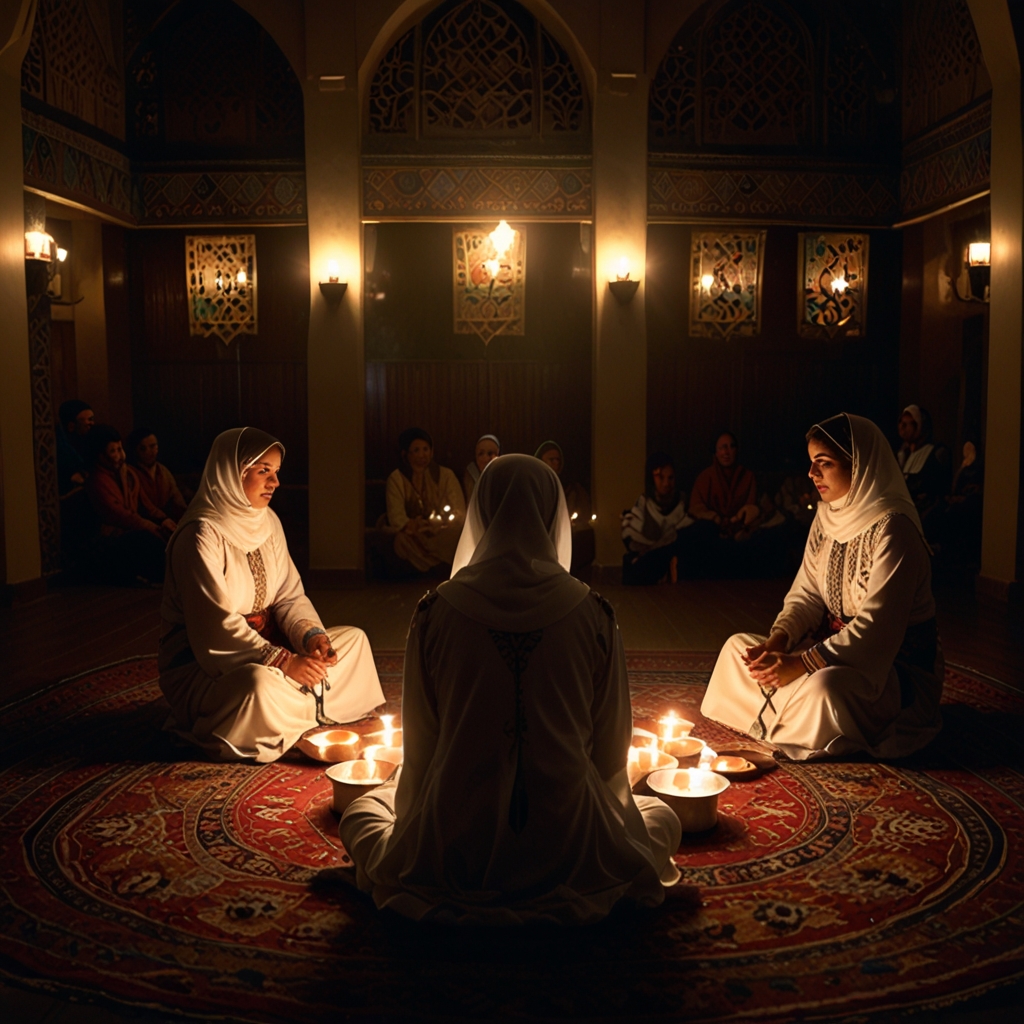Women in Sufism: The Unsung Mystics of Divine Love
Sufism, the mysterious dimension of Islam, is often associated with male saints, poets and scholars. However, women’s contributions in Sufism have often been ignored. From the early centuries of Islam to today, women have played an important role in the form of spiritual guides, poets and mystics, leaving the legacy of knowledge, love and devotion behind
The Early Sufi Women: Pioneers of Divine Love
One of the most famous figures in Sufiism is Rabi-Al-Vadia (713–801 CE). He thought of Sufi and presented the concept of pure, unconditional love to God – a love that neither looks for reward nor afraid of punishment. His teachings emphasized that real affection is from a heart burning with love for the divine, rather than duty or a sense of responsibility.
Another important was still the fatima of the low mysterious nishpur, which directed and influenced the famous Sufi champion Bejid Bastami. His deep spiritual insight and knowledge gained much respect among his contemporaries.
In recent centuries, Aisha Al -bunia (1500s) appeared as a learned, poet and Sufi champion, who wrote a lot about divine love. He left behind a treasure of mysterious poem and prose, making him one of the few medieval women whose writing has survived.
Women as Spiritual Guides and Teachers
Contrary to the commonplace notion that spiritual management in Islam is male-ruled, many ladies have served as murshidahs (religious guides) within Sufi traditions. They have led dhikr (remembrance) gatherings, mentored disciples (each women and men), and even installed their own religious centers.
Throughout records, women had been recognized as saints in numerous Sufi orders, in particular inside the Chishti, Qadiri, and Naqshbandi traditions. In some components of the Islamic world, specifically in West Africa, Turkey, Iran, and South Asia, ladies have led Sufi accommodations (zawiyas), appearing as both religious and community leaders.
Women in Sufi Poetry and Literature
Mystical poetry is one of the maximum powerful expressions of Sufi concept, and women have made first-rate contributions on this domain.
Aisha al-Ba’uniyya and Rabi’a Balkhi penned deeply spiritual poetry approximately divine love and mystical union, reflecting on the longing of the soul for the Divine.
Even Rumi, the excellent Persian Sufi poet, frequently used feminine symbols to represent divine know-how and love.
This poetic lifestyle maintains today, as present day female Sufi students and poets explore spirituality thru cutting-edge lenses
.
The Role of Women in Sufi Orders Today
Women play active roles in Sufi communities around the world. In countries such as Morocco, Sudan and Indonesia, women lead in spiritual ceremonies, social initiatives and dialogues with interface.
With the emergence of social media and online platforms, modern women Sufi teachers reach the wide audience, making the Sufi knowledge more accessible than ever.
However, challenges remain. Historically, the formal SUFI education and management of women in patriarchal structures are limited. Many female mystics are forgotten or excluded from the historical stories of mainstream.
Conclusion: A Legacy of Light
Despite these challenges, the legacy of women in sufism – in poetry, survives in spiritual doctrine and in the hearts of those who continue to search for the divine. These women were not just supporters of Sufi traditions; He was the lighthouse of light, shaped Sufi through his intellect, affection and love.
His contribution is not only in the form of historical footnotes, but as essential chapters in the history of sufism.
The Silent Guardians of Mysticism
Women in Sufism have lengthy been the silent guardians of mystical traditions, embodying deep non secular expertise and devotion. Across centuries, girls in Sufism have nurtured disciples, composed poetry, and engaged in excessive non secular practices that go beyond the bounds of conventional religious roles. Whether via leading dhikr gatherings or composing verses on divine love, women in Sufism have preserved and expanded the paranormal direction in spite of societal obstacles. Their contributions stay an vital, yet frequently omitted, part of Sufi heritage, demonstrating that ladies in Sufism have usually been on the coronary heart of religious enlightenment.

The legacy of women in Sufism is one of the flexibility, devotion and the divine relationship. Since the first days of Islamic mysticism, women in Sufism have served as a lighthouse for spiritual knowledge, and guided the applicants for internal changes. Through poetry, prayer and direct spiritual experience, women in Sufism have shaped the Sufi tradition in ways that inspire generations. The author of female mystics portrays the intensive understanding of divine love, and strengthens the fact that women have always played a central role in the design of the spirit of spiritual applicants.

In modern times, the voice of women in Sufism recognizes once again, as several scholars highlight their forgotten contribution. Across different cultures, women in Sufism run in spiritual practice provide guidance and knowledge to those who are on mysterious path. Whether literature, art or through direct teaching, women in Sufism regain their place in the history of spiritual history. Their presence recalls the world that women are not only participants in sufism, but essential columns with mysterious tradition.

